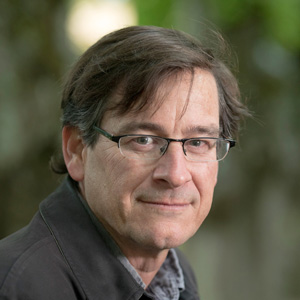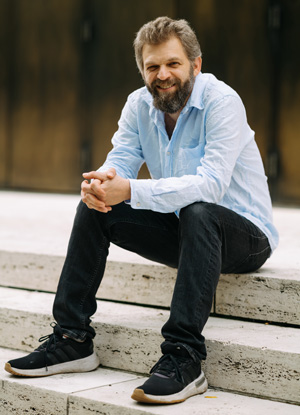|
This week’s announcement of 22 new MacArthur Fellows brings the grand total to 1,152 since 1981. Each Fellow receives a grant of $800,000 from the MacArthur Foundation to pursue their work.
Where have all those “genius grant” recipients lived? Where were they born? And what have they been engaged in the most?
The Foundation generously provides all those data and more. Running a comb through it produces the following top 10 states by number of MacArthur Fellows, with No. 1 New York the resident location of more than 21% of all Fellows named since the program’s inception and California accounting for another 19%. In keeping with that proportion, eight of the 22 new Fellows are based in those two states.
| State/District |
No. of MacArthur Fellows Since 1981 |
| |
|
| New York |
249 |
| California |
217 |
| Massachusetts |
133 |
| Illinois |
60 |
| New Jersey |
53 |
| District of Columbia |
38 |
| Michigan |
30 |
| Pennsylvania |
29 |
| Connecticut |
25 |
| Washington |
23 |
Just missing out of the top 10 are Texas (19), Arizona (17), Virginia (15) and North Carolina (14).
Sorting by city (the data do not group Fellows into metro areas) produces this top 10:
| City |
State |
No. of MacArthur Fellows |
| |
|
|
| New York |
NY |
182 |
| Cambridge |
MA |
85 |
| Chicago |
IL |
43 |
| Berkeley |
CA |
40 |
| Washington |
DC |
37 |
| Los Angeles |
CA |
35 |
| Princeton |
NJ |
34 |
| Stanford |
CA |
30 |
| Ann Arbor |
MI |
27 |
| San Francisco |
CA |
25 |
Pasadena, California, and Boston, Massachusetts have hosted 24 Fellows apiece, followed by Seattle, Washington, with 22 and New Haven, Connecticut, with 21.
This breakdown of the data addresses where MacArthur recipients are based today — a finding aligned primarily with cultural and educational institutions and ecosystems either employing these individuals or supporting their work.
The data are difficult to sort because many Fellows list their institutional association as their academic department first, with no column heading in the MacArthur data for overall institution name. Nevertheless, a scan of the spreadsheet shows the top institutions for harboring MacArthur Fellowship recipients are what you might call the usual suspects: Harvard, CalTech, Princeton, Stanford, Yale, Cornell, University of Michigan, MIT, University of California, Berkeley, and University of Chicago and Northwestern University in Chicagoland.
The geographical data attached to brilliant people is compelling when it comes to the power of institutional affiliation. For perspective, I reached out to one of the four geographers to have received a MacArthur. Professor Don Mitchell, at Syracuse University when he received the award in 1998, today is a professor in the Department of Human Geography at Uppsala University in Sweden. As one might expect from a MacArthur Fellow, he sought to explore further.
“While the distribution of MacArthur recipients is interesting, I am not sure it says a great deal,” he writes in an email. “In many ways the distribution tracks population. And the state level data hides at least as much as it reveals (there is a big difference between NYC and Upstate where I used to live). It is hardly surprising that NYC, LA, and Chicago would be overrepresented in the data, because the interesting geographical questions concern not patterns of distribution as such, but rather infrastructures allow[ing] for critical masses of, e.g. artists and musicians to survive and thrive. Academic MacArthurs also tend to mirror academic investment and infrastructure.

Donald Mitchell, Professor in the Department of Human Geography at Uppsala University in Sweden, received a MacArthur grant in 1998.
Photo by Mikael Wallerstedt courtesy of Uppsala University
|
“Looking at distribution in a more fine-grained way than you offer, however, might raise some very interesting questions,” Mitchell continues. “For example, what is it about Syracuse, NY/Syracuse University that would lead to three of us affiliated with that place and university to receive this award? Obviously that second-tier private university is overrepresented in the data.” Mitchell’s fellow Syracuse Fellows are photographer and video artist Carrie Mae Weems (part of the 2013 cohort) and plant ecologist, educator and writer Robin Wall Kimmerer (2022).
What happens when we ask what’s in the water? In other words, where are the geniuses born? Here are the top 10 state by birth state:
| Birth State/District |
No. of MacArthur Fellows |
| |
|
| New York |
190 |
| California |
92 |
| Pennsylvania |
63 |
| Massachusetts |
59 |
| Illinois |
52 |
| District of Columbia |
35 |
| Ohio |
32 |
| New Jersey |
27 |
| Texas |
27 |
| Michigan |
24 |
Florida (22), Maryland (22) and Connecticut (20) are nipping at those states’ heels. But the most notable finding is that 237 Fellows currently in the United States were born outside the United States — providing another facet to the discussion of the importance of welcoming and fostering immigrant talent.
Sort by birth city and the following results appear:
| Birth City |
No. of MacArthur Fellows |
| |
|
| New York, New York |
15 |
| Boston, Massachusetts |
8 |
| Chicago, Illinois |
6 |
| Los Angeles, California |
6 |
| Washington, D.C. |
6 |
| San Francisco, California |
5 |
The sparse numbers owe largely to the fact that most Fellows do not list their birth city. But sorting by birth country sheds at least a bit of light on non-U.S. points of origin:
| Birth Country |
No. of MacArthur Fellows |
| |
|
| United Kingdom |
28 |
| China |
19 |
| Canada |
16 |
| Germany |
14 |
| India |
12 |
| France |
9 |
| Australia |
8 |
| Mexico |
8 |
| Former USSR |
7 |
| Cuba |
6 |
Although not broken out by geography, it also can be illuminating to explore what the Fellows are most engaged in doing. Here are the top 20 areas of practice, demonstrating a prevalence of the arts in terms of sheer numbers but also an overall balance across scientific, artistic and educational/informational pursuits:
| Area of Practice |
No. of MacArthur Fellows |
| |
|
| Fiction & Nonfiction Writing |
64 |
| Music Performance & Composition |
54 |
| Poetry |
50 |
| Ecology and Evolutionary/Environmental Biology |
37 |
| Mathematics, Statistics & Probability |
37 |
| Theatrical Arts |
35 |
| 3-D Visual Art |
32 |
| Physics |
32 |
| Communications & Journalism |
29 |
| Moving Image |
28 |
| American History |
27 |
| Computer Science & Electrical Engineering |
26 |
| Genetics & Molecular Biology |
25 |
| 2-D Visual Art |
22 |
| Choreography & Dance |
22 |
| Neuroscience & Neurobiology |
22 |
| Economics |
21 |
| Public Health & Biomedical/Health Sciences |
20 |
| Education & Training |
19 |
| Chemistry |
18 |
| Classics, Late Antiquity & Medieval Studies |
18 |

New Paltz, New York-based violinist and producer Johnny Gandelsman, known for his work with the Silk Road Ensemble and now Brooklyn Rider among other collaborations, is one of the five newly named MacArthur Fellows who are based in the Empire State.
Photo courtesy of John D. and Catherine T. MacArthur Foundation
|
Again, Professor Mitchell suggests, the data only provoke deeper levels of inquiry. Another question to ask, he avers, is “Why have the geography recipients not been located in the big cities at the time of their awards?” The answer, he says, “has a lot to do with how elite universities in the mid-twentieth century decided that geography was no longer a fit university subject, the wisdom of which decisions we are still living with.”
Mapping distributions, he concludes, “might raise questions. It in no way answers them.”
For more perspective, spend some time navigating the range of explorations and creations pursued by this year’s class of 22 MacArthur Fellows.
It doesn’t take long to see that their visions surpass boundaries and break through traditional territorial lines. The geography of genius may be their ability to reach people everywhere from anywhere their minds, hearts, energy and ceaseless curiosity take them. — Adam Bruns
|